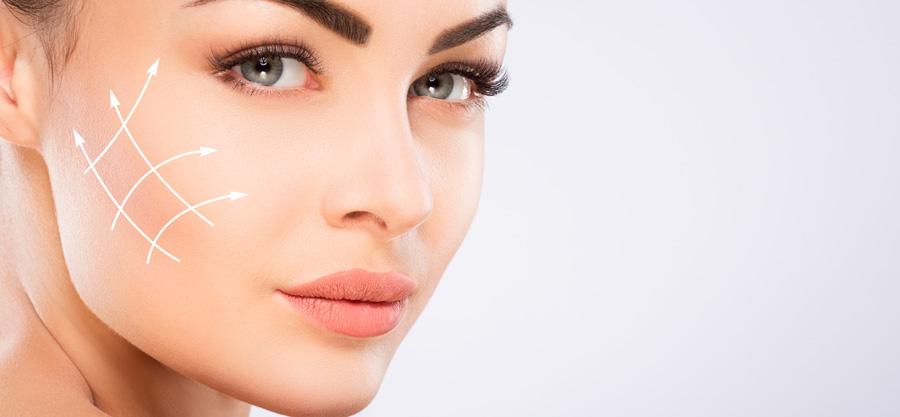What to do before your procedure?
At your initial consultation with Dr. Marciales, you will discuss your medical history and receive a physical exam. He must be healthy and have realistic goals for his procedure. Dr. Marciales will make recommendations based on his expectations and general health. In some cases, a smaller procedure may be enough to satisfy the goals of it.
Explanation of the procedure:
Tummy tuck, also known as abdominoplasty, is a cosmetic surgical procedure to improve the appearance of the abdomen.
During a tummy tuck, excess skin and fat are removed from the abdomen. In most cases, the connective tissues of the abdomen are also reinforced with sutures. The remaining skin is repositioned to create a more toned appearance.
If you have skin buildup around your navel area and a weak lower abdominal wall, you may choose to have a tummy tuck. A tummy tuck can also enhance your body image.
What can I expect from a tummy tuck procedure?
The tummy tuck is performed in a hospital or outpatient surgical center. During the tummy tuck you will be under general anesthesia, so you will be completely unconscious and feel no pain. In some cases, you may be given a pain reliever and be moderately sedated (partially asleep).
during the procedure
The plastic surgeon will make incisions in the shape of a horizontal oval or ellipse to remove most of the skin and fat between the navel and the pubic hair. The fascia, which covers the abdominal muscles, will be reinforced with permanent stitches.
Next, the plastic surgeon will reposition the skin around the navel. The navel will be removed through a small incision and sewn back into its normal position. The hip-to-hip incision above the pubic hair will be sutured, leaving a scar along the natural crease within the bikini line.
During the procedure, you may receive an antibiotic to reduce the risk of infection.
Post operation:
- After a tummy tuck, the abdominal incision and belly button will likely be covered with a surgical dressing. Small tubes may be placed at the incision sites to drain any excess blood or fluid. Your bed will be positioned so that your upper body is slightly raised and your knees are at an angle for the first few days after surgery. Members of your health care team will also help you walk as early as the first day after your tummy tuck to help prevent blood clots.You will likely feel moderate pain, which will initially be controlled with pain relievers. It is normal to have swelling in the area of the surgery for about six weeks. In some cases, the swelling can take up to three months to go away. Drains may be left in place for several days after surgery. Your doctor or a member of your health care team will tell you how to empty and care for your drains. You may need to continue taking an antibiotic while you have the drains. Your surgeon may also prescribe blood thinners for several days after your tummy tuck.You will wear abdominal support garments (abdominal binder) for about six weeks after your tummy tuck. This will help prevent fluid buildup and provide abdominal support during recovery. The doctor will explain how to care for the scar.For the first six weeks after your tummy tuck, you’ll need to be careful when you move and avoid positions that put stress on the incision, such as leaning forward quickly, to prevent the wound from opening. In addition, you will need to schedule follow-up visits with the doctor during the following year.
What are the risks?
Tummy tuck poses several risks, such as:
- Accumulation of fluid under the skin (seroma). Drainage tubes left in after surgery can help reduce the risk of seroma. After surgery, the doctor may also remove the fluid with a needle and syringe.
- Poor wound healing. Sometimes the areas along the incision line heal poorly or begin to separate. During and after surgery, you may be given antibiotics to prevent infection.
- Cicatrization. The scar from a tummy tuck incision is permanent, but it remains along the bikini line, which is easily hidden. The length and visibility of the scar vary from person to person.
- tissue necrosis. During a tummy tuck, fatty tissue deep within the skin of the abdominal area may be damaged or die. In addition, smoking increases the risk of tissue necrosis. Depending on the size of the area, the tissue may heal on its own in a matter of weeks or require a surgical touch-up procedure.
- Changes in skin sensitivity. During a tummy tuck, the repositioning of the abdominal tissues can affect the sensory nerves on the surface of the abdominal area and, in rare cases, the upper thighs. You may notice less sensation or numbness. This usually subsides in the months after the procedure.
Like any other type of major surgery, a tummy tuck carries the risk of bleeding, infection, and adverse reactions to anesthesia.
Call +66 43 880 147 for more information or to make an appointment.







